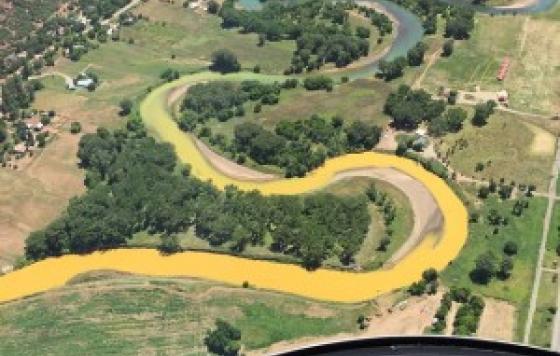By Jennifer Peters, National Water Campaigns Coordinator - Follow Jennifer on Twitter (@EarthAvenger)
Leaving 100 million tons of toxic, industrial waste in unstable, unlined pits near rivers and lakes sounds like a bad idea, right?
Not necessarily, according to the CEO of Duke Energy.
Earlier this year an old pipe under one of Duke Energy’s inactive coal ash ponds broke, spewing an estimated 39,000 tons of coal ash into the Dan River. (Coal ash is the toxic remains of burning coal.) It took Duke nearly a week to stop the flow of pollution, which contaminated at least seventy miles of river, causing several Virginia drinking water utilities downstream to close their intakes to prevent the ash from polluting their systems. To prevent future disasters, Duke is now working on a plan to close its 32 coal ash ponds in North Carolina, which contain decades of accumulated toxic waste - at least 100 million tons - nearly all of it stored precariously next to a river, lake, or drinking water reservoir.
I highly recommend you watch 60 Minutes’ recent piece on how Duke is (mis)handling its big ash problem. Lesley Stahl’s interview with Duke CEO Lynn Good makes the head executive of the nation’s largest electric utility look pretty bad. At one point during the interview Good claims the company needs to do more studies to determine whether simply “capping in place” this industrial waste will be sufficient to prevent the nasty chemicals in coal ash from contaminating water sources.
It doesn’t take a scientist to figure out that as long as coal ash is stored in unlined pits there is always the potential for water contamination, cap or no cap. If Duke leaves this toxic waste in place it will be gambling on the future health and safety of North Carolina and neighboring Virginia residents. And odds are it’s not a question of whether or not more contamination will occur; it’s a question of when.
Duke is certainly not the only power utility with coal ash problems. There are over 1000 coal ash storage pits in at least 37 states, many of them unlined and unmonitored, and almost all are sited near bodies of water. The Environmental Protection Agency (EPA) and environmental organizations have documented hundreds of known cases of coal ash contamination. Since most of these waste pits are not closely monitored, there are likely dozens, if not hundreds, of other pits that are unknowingly leaking toxics into ground or surface water.
Amazingly, there have never been federal regulations to require utilities to manage their coal ash waste safely, and most state regulations are weak or non-existent. That may soon change. EPA will be releasing its first-ever coal ash rule on December 19th, though utilities have been lobbying hard for the agency to finalize a weak rule that would do little to prevent future spills like the one at Dan River. If you agree with me that this is unacceptable, please take action today and tell the President you want EPA to issue a strong rule that will require utilities to clean-up all of their waste, not just some of it.
Related Posts
Stay Informed
Get the latest updates and actions:
Thanks for signing up!
There was a problem processing your signup. Please try again.


